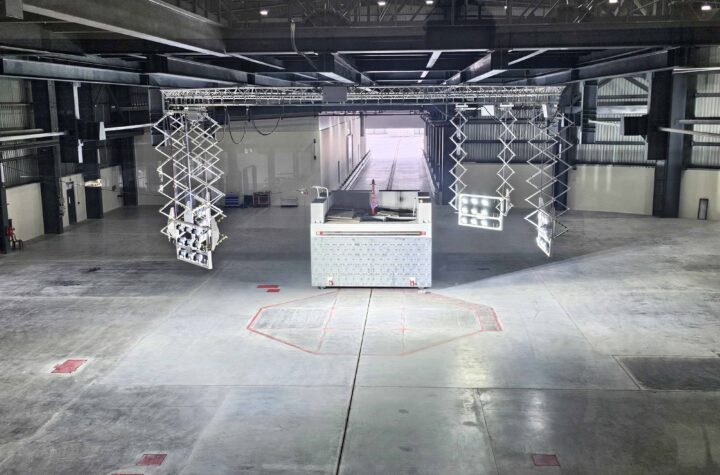
Hi-tech surfaces and technology are literally changing the face of windshields. Bigger windshields have traditionally been associated with heat build-up and misting problems. A new range of products is set to change that.
Automotive Industries (AI) asked Atul Gambhir, Marketing Director Saint-Gobain SEKURIT International how the company’s products were helping the visual and thermal comfort for drivers.
Gambhir: Nowadays, it is mandatory to constantly strive to improve visibility and comfort for drivers. Driver comfort is affected by extreme weather conditions. In winter, there is icing and/or fog on the windshield, which has to be removed to allow safe driving. In summer, heat from the sun enters the vehicle, creating an uncomfortable interior temperature. Responding to these challenges, Saint-Gobain SEKURIT has developed an all-weather windshield called SGS ClimaCoat, which provides dual functionality – improved vision and safety – and reduction in the amount of heat entering the vehicle.
AI: How does your new all-weather windshield SGS ClimaCoat improve safety and comfort?
Gambhir: In winter, SGS ClimaCoat de-ices and de-fogs the windshield in just a few minutes at the push of a button. Even at temperatures of -5 °C, the heatable glazing removes ice in less than four minutes. Moreover, it prevents re-icing, which normally occurs during the first few minutes of driving the vehicle. Consequently, SGS ClimaCoat provides an important contribution to active safety, as this function improves driver vision. This new technology offers better thermal comfort in summer through the best heat reflecting system on the market. The benefit arises from the metallic coating in the windshield, which reflects solar energy. The solar factor is heavily reduced compared to standard green glass windshields. In fact, it is twice as effective as existing heat reflecting technologies in the market. Moreover, the vehicle with SGS ClimaCoat arrives at a comfortable interior temperature, 30 % faster than with standard glazing.
AI: What is the technology behind SGS ClimaCoat?
Gambhir: SGS ClimaCoat, the new generation of Saint-Gobain SEKURIT’s heatable glass, is a laminated glass which has a conductive multilayer coating applied on the inner side of one glass layer. A normal voltage of 14 V is applied through electrical connectors to the coating. The resulting current warms up the metallic coating and so the glazing is heated. The heat output is up to 400 W/m² with a normal voltage of 14 V. In addition, the metallic coating acts like a mirror, which reflects solar radiation and prevents heating of the car interior.
AI: What would be the SGS ClimaCoat advantages for the OEMs?
Gambhir: There are several advantages for the OEMs to equip their new or existing car models with SGS ClimaCoat. OEMs can finally provide their customers with a heatable windshield, without the disadvantage of visibility of the heating wires in the windshield, which reinforces a high quality image of the car brand. Another advantage is the heating with standard available voltage of 14 V, making it easier and cost efficient for OEMs to implement this technology on their cars. Finally, the fact that SGS ClimaCoat decreases fuel consumption is a major competitive advantage for the OEM.
AI: How would the new product help to reduce the CO2 emissions of the vehicle?
Gambhir: SGS ClimaCoat decreases the additional fuel consumption caused by the air conditioning system by about 0.1 l/100km. Consequently CO2 emission is reduced by approx. 2.5 grams of CO2 per km. So, SGS ClimaCoat saves the driver fuel and money while preserving our environment.
AI: When and where are we going to see SGS ClimaCoat first installed?
Gambhir: Saint-Gobain SEKURIT has an enviable track record of bringing unique innovations in automotive glazing to the market. The SGS ClimaCoat is one such innovation. SGS is in advanced discussions with several OEMs in Europe, and expects the product to be implemented in the market by early 2011.
Interview ends
First electrochromic glass plant
Saint-Gobain Glass has acquired a 50% share of US company SAGE Electrochromics in order to manufacture electrochromic glass on a large scale.
Saint-Gobain Glass and SAGE will build the world’s first large-scale electrochromic glass plant in Faribault, Minnesota (United States). The project which started in November 2010 will cost about 135 million US dollars. It will act as the spearhead for electrochromic technology worldwide.
The plant will be able to produce over 370,000 square meters (4 million square feet) of electrochromic glass a year, with sizes ranging up to 1.5 x 3.5 meters (5 x 10 feet). It is scheduled to begin in mid-2012. “This alliance heralds the start of a new revolution in the habitat glass industry,” said Jean-Pierre Floris, Senior Vice-President of Compagnie de Saint-Gobain and President of the Innovative Materials Sector. “We are providing electrochromic advanced glazing that will be environmentally significant and affordable”.
“Until now, electrochromic glass has been an emerging product. This alliance will trigger economies of scale, making possible a new era of high-performance windows that are both eco-friendly and economically sound,” said John Van Dine, SAGE Chief Executive Officer.
SAGE will remain an independent company and continue to market its SageGlass products in North America. Saint-Gobain will market SageGlass as Quantum Glass in Europe. The two companies will work together to develop a marketing strategy for Asia and the rest of the world, leveraging Saint-Gobain’s distribution partnerships, they say.









More Stories
Sonatus – The industry is shifting gears to software
Cybord warns of dangers of the stability illusion
HERE building trust in ADAS systems